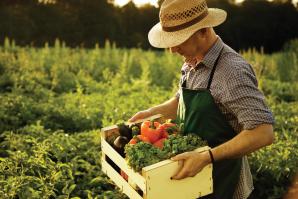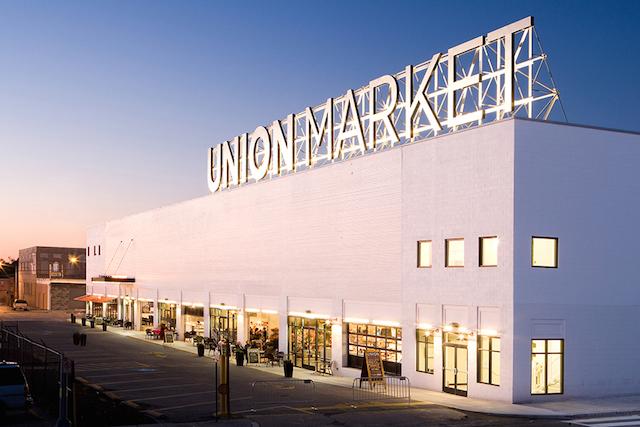Great food capitals of the world: Can you name them? Florence. Paris. Tokyo. Barcelona. Istanbul. Singapore. What do these destinations of culinary delights offer? Amazing restaurants. Locally inspired cuisine. World-renowned chefs.
But the real commonality between these cities is less about food and more about a place, specifically they all offer amazing public markets.
In May, during Sacramento Metro Chamber’s Capital-to-Capital lobbying effort, I co-led a group of Sacramento delegates to visit Union Market in Washington, D.C. Consider it a foodie field trip hosted by the chamber’s agriculture and civic amenities committees for the people who shape the region’s policies and economy to experience the impact of a public market first-hand.
Before you ask why someone employed by a sports team is writing about cuisine, I should share a not-so-subtle secret: I love to travel for food. For me, it’s about more than flavor. Food tells a city’s story — its diversity, history and influences. Even the type of food served at a city’s ballpark can say more about a region’s personality and people than a tourist guidebook. As a result, I’ve tempted my taste buds at many of America’s grandest public markets, such as Pike Place Market in Seattle, San Francisco’s Ferry Building, Philadelphia’s Reading Terminal, Eastern Market in Detroit and Napa’s own Oxbow.
“A public market isn’t a future desire but an immediate need.”
The idea of building a permanent, indoor, year-round market in Sacramento is not new. The city’s original public market operated from 1923 to 1974 in what is now downtown Sacramento’s Sheraton Grand Hotel. Long before Sacramento declared itself the Farm-to-Fork Capital of America, various developers, dreamers and advocates identified potential locations and concepts. This February, a team led by Forward Observer CEO Joe Rodota, real estate developer Richard Rich and real estate attorney Jeffrey Dorso with Steve Carlin, project manager of the Ferry Building and Oxbow Public Market, announced the possibility of building a public market at the historic rail depot.
A Sacramento public market would certainly serve as a capstone to the region’s rich and diverse agriculture industry. Sacramento is already home to California’s largest farmers’ market; why not enhance it with the largest public market? The market would serve as an economic catalyst and pillar of the Next Economy prosperity initiative. Pike Place provides nearly 2,400 jobs, not including the economic multipliers. I could go on by sharing the countless economic impact studies that document millions of dollars in tax revenue and the earned media of a world-class project. Rather, I prefer to share two attributes sourced from my completely unscientific and biased opinion that, I feel, are most important for a market in Sacramento: a small business catalyst and a regional gathering place.
My first experience with the 47,000-square-foot Union Market in Washington, D.C., was a year ago while on my first Cap-to-Cap trip. I was there for the same reason as nearly 10,000 other visitors: lunch. A dear friend in D.C. served as Union Market’s local “beat cop” and invited me to join him at the market for a meal. He knew every vendor, along with each of his or her stories, and before long so did I. They shared not only their personal stories but also that of a changing neighborhood; a transition from a place frequented by crime to one now frequented by families. Each artisan was unique in their journey, but all shared the commitment to take their passion for food beyond Union Market or even their city.
It takes a little imagination to see this concept come to life in Sacramento, surrounded by the region’s abundant, locally sourced ingredients, resurgence of local breweries and a critical need to develop job opportunities in farming and food. After all, Pike Place was home to more than just Starbucks; Sur La Table is one of several other businesses that trace its roots to Seattle’s public market.
The Knight Foundation’s Soul of a Community Report identifies entertainment venues and places to meet as one of three critical factors for creating a desirable community. Which begs me to ask, where do you run into people in Sacramento? The mall? A sporting event? The zoo?
Project for Public Places, a nonprofit committed to public spaces and placemaking, asked people why they enjoyed public markets. The resounding response was the experience. Public markets serve as gathering places — a place to see people, to hold conversations and to be spontaneous and social. I’ve witnessed this first-hand at Oxbow Public Market in Napa.
Oxbow, one of our country’s finest examples of a public market, is about 60-miles from Sacramento. Since it takes just an hour to get there, you should make a point to visit, and when you do, go on Tuesday — local’s night. Napa’s public market opened shortly before its neighbor Copia closed in 2008. Many feared the closure of Copia combined with the recession would doom Oxbow. Today, it thrives because it serves as a gathering place for locals. There, you’ll bump into Napa Mayor Jill Techel waiting in line at Annette’s Chocolates, and you’ll see the region’s greatest winemakers ordering English muffins at Model Bakery next to local teachers showcasing student art. Similar to Sacramento, Napa is a city in which everyone knows everyone. These worlds and people collide more often than not at Oxbow.
Mark Bittman of The New York Times wrote, “There is nothing like a grand urban food market, which can anchor a neighborhood and even a city.” So where should we anchor ours? Who is to say we build only one? D.C. offers its residents two. Do we build something for residents and tourists, or a wholesale market for our restaurateurs; a central place showcasing the regions best meat, fish and produce to bridge farms and restaurants?
The most important question to ask may not be where or what, but when. A public market isn’t a future desire but an immediate need. Union Market opened a year after a fire devastated the structure that currently houses it. Property owners saw the opportunity and moved fast to renovate.
Will Sacramento be the next great food capital? Or will our taste buds just continue to salivate over the possibility?
Erika Bjork is the vice president of communications for Sacramento Republic FC and was on this year’s Sacramento Metro Chamber Cap-to-Cap Steering Committee. She sits on the Metro Chamber Civic Amenities Committee and is Sacramento’s 2014 Young Professional of the Year.
Recommended For You
Sight on Seattle
Sac seeks inspiration from the Emerald City
As Sacramento’s Next Economy initiative tackles job growth, it is looking at a spectrum of untapped industries — as opposed to singling out individual industries — ripe for expansion. That strategy is the hallmark of two groups in the Seattle area.

Eat it Up
Why you should salivate over Sacramento’s farm-to-fork mantra
In October of last year, Sacramento Mayor Kevin Johnson declared Sacramento the “Farm-to-Fork Capital of America,” presenting the city with a long-term opportunity to build a distinct brand identity that could help the region attract and retain citizens, conventions, tourists and entrepreneurs. It’s especially valuable because a strong regional identity gives energy to the economic engines that make cities successful. Anyone needing proof can look directly to Austin, Texas.




